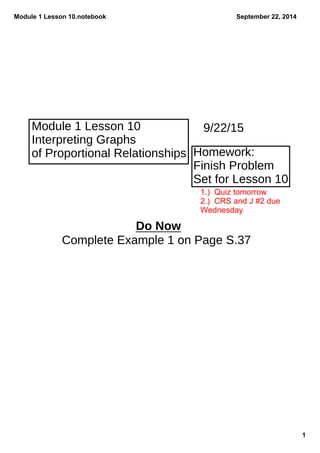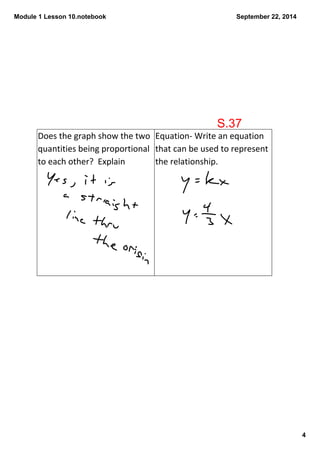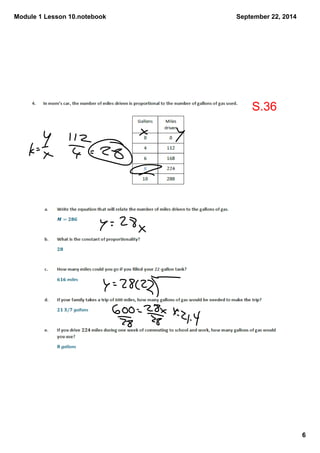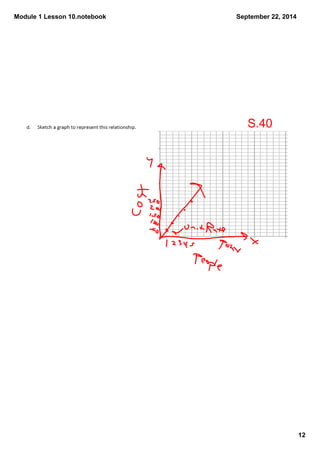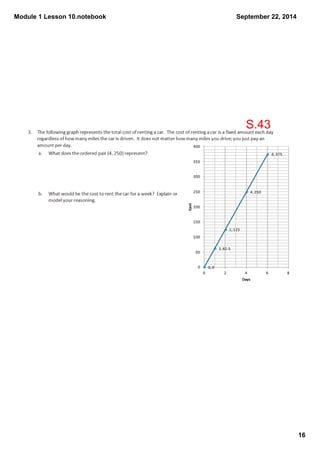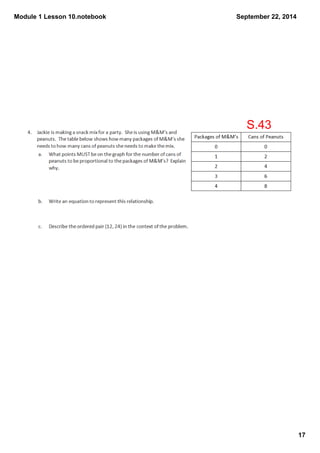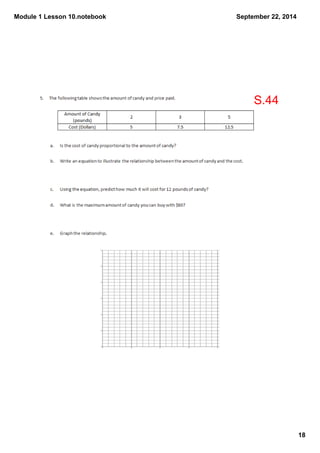This document is from a mathematics lesson on interpreting graphs of proportional relationships. It provides examples and exercises for students to complete involving a recipe for chocolate chip cookies that uses flour as an ingredient. Students are asked to create charts and graphs showing the proportional relationship between the amount of flour used and the number of dozens of cookies produced. They also identify unit rates and write equations to represent the relationships shown in the graphs.
